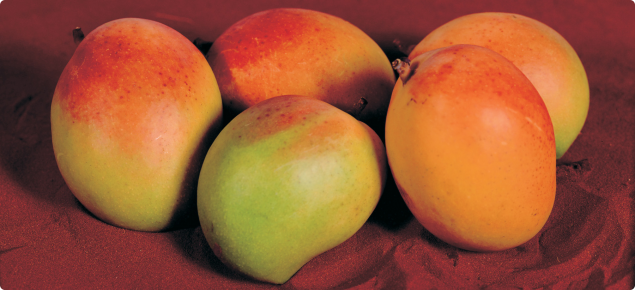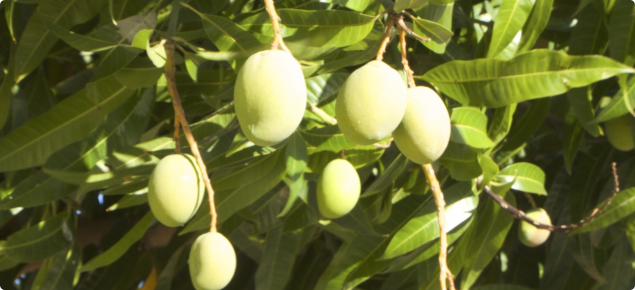Varieties
Early or mid-season mango varieties are the most suitable for the Perth area. Fruit from these varieties will ripen in March and April. This means the tree will flush before winter, flower in early spring and produce its crop in late summer.
Late varieties such as Keitt are not suitable because they ripen too late and will not flush before winter. This results in biennial bearing, which means good cropping one year, followed by poor cropping in the next season.
The main commercial variety around Perth is Kensington Pride, commonly known as “KP”. It produces red-blushed fruit weighing 300-500g. It may be grown from seedlings or grafted on rootstock, which is more expensive.
| Variety | Timing | Characteristics |
|---|---|---|
| Haden | 1-2 weeks later than KP | Small to medium fruit Red blush Different taste to KP |
| Namdok Mai | Same time as KP | Long yellow, elongated fruit Sweet nutty flavour Common variety in Thailand |
| R2E2 | 1-2 weeks later than KP | Second most common variety in Perth area Large fruit Good shape Good storage Moderate taste |
| Kent | 2-3 weeks later than KP | Large fruit with red blush Good flavour Low fibre Biennial bearing and poor quality fruit may be a problem in cooler areas |
Nursery management
KP is polyembryonic, which means that several embryos develop within a single seed. Each embryo will produce trees that are true-to-type. The best time for planting seeds is in summer, as this will enable good growth before winter. It is best to obtain seeds from trees which have good yields and quality. See link on propagating mangoes for information on growing from seed.
Keep the plants in a sheltered position in a nursery for at least the first two winters and protect them from frost. Plants will grow well given a slow release, well balanced fertiliser. Pot-on to 20cm and 30cm diameter pots as the plants grow. They can be kept in pots until they are more than 1 metre high.
Mango varieties other than KP should only be purchased as grafted plants to ensure that they are true-to-type.



